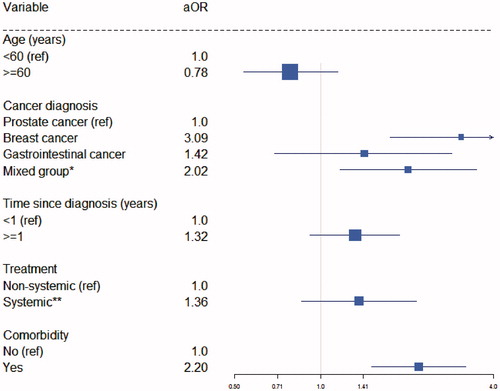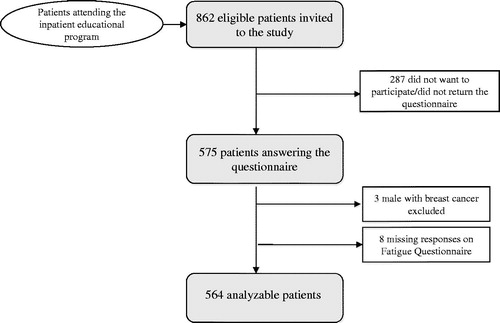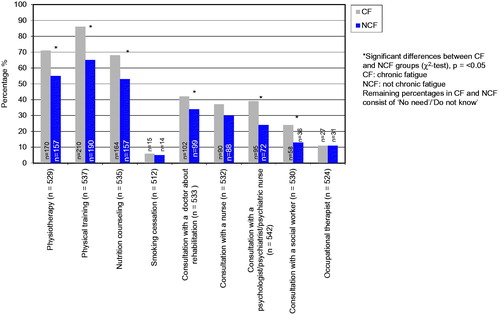Figures & data
Figure 5. Proportions of CF and NCF participants perceived need for number of components in a rehabilitation program (n = 552)

Figure 6. (a) Physical component score (PCS) among CF and NCF participants within different need for number of components in a rehabilitation program. (b) Mental component score (MCS) among CF and NCF participants within different need for number of components in a rehabilitation program (n = 525).
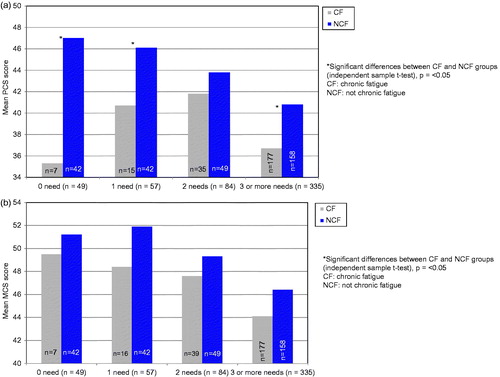
Table 1. Characteristics of the participants (n = 564).
Figure 2. (a) Prevalence of chronic fatigue (CF) and demographical and medical variables associated with CF (vs. not CF) (n = 564). Numbers may not add up to 564 because of missing data. cOR crude odds ratio. *Mixed group including gynecological cancer (n = 44), lung cancer (n = 26), neuroendocrine tumor (n = 24), head and neck cancer (n = 18), lymphoma (n = 16), brain cancer (n = 15), myeloma (n = 13), sarcoma (n = 6), leukemia (n = 7), cancer of the urinary tract (n = 5), testicular cancer (n = 1) and others (n = 10). **Systemic treatment including chemotherapy and/or hormone therapy ± surgery and/or radiotherapy. Non-systemic treatment including surgery and/or radiotherapy. (b) Prevalence of chronic fatigue (CF) and comorbidity and lifestyle variables associated with CF (vs. not CF) (n = 564). Numbers may not add up to 564 because of missing data. cOR crude odds ratio. BMI: body mass index; PA: physical activity. *PA guidelines include at least 150 minutes of moderate intensity PA or 75 minutes of high intensity PA per week.
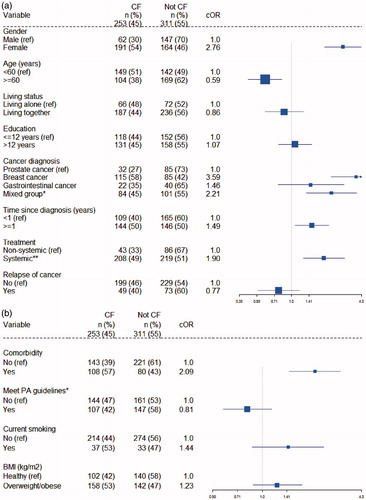
Figure 3. Multivariate regression analyses (n = 544). aOR adjusted odds ratio. *Mixed group including gynecological cancer (n = 44), lung cancer (n = 26), neuroendocrine tumor (n = 24), head and neck cancer (n = 18), lymphoma (n = 16), brain cancer (n = 15), myeloma (n = 13), sarcoma (n = 6), leukemia (n = 7), cancer of the urinary tract (n = 5), testicular cancer (n = 1) and others (n = 10). **Systemic treatment including chemotherapy and/or hormone therapy ± surgery and/or radiotherapy. Non-systemic treatment including surgery and/or radiotherapy.
